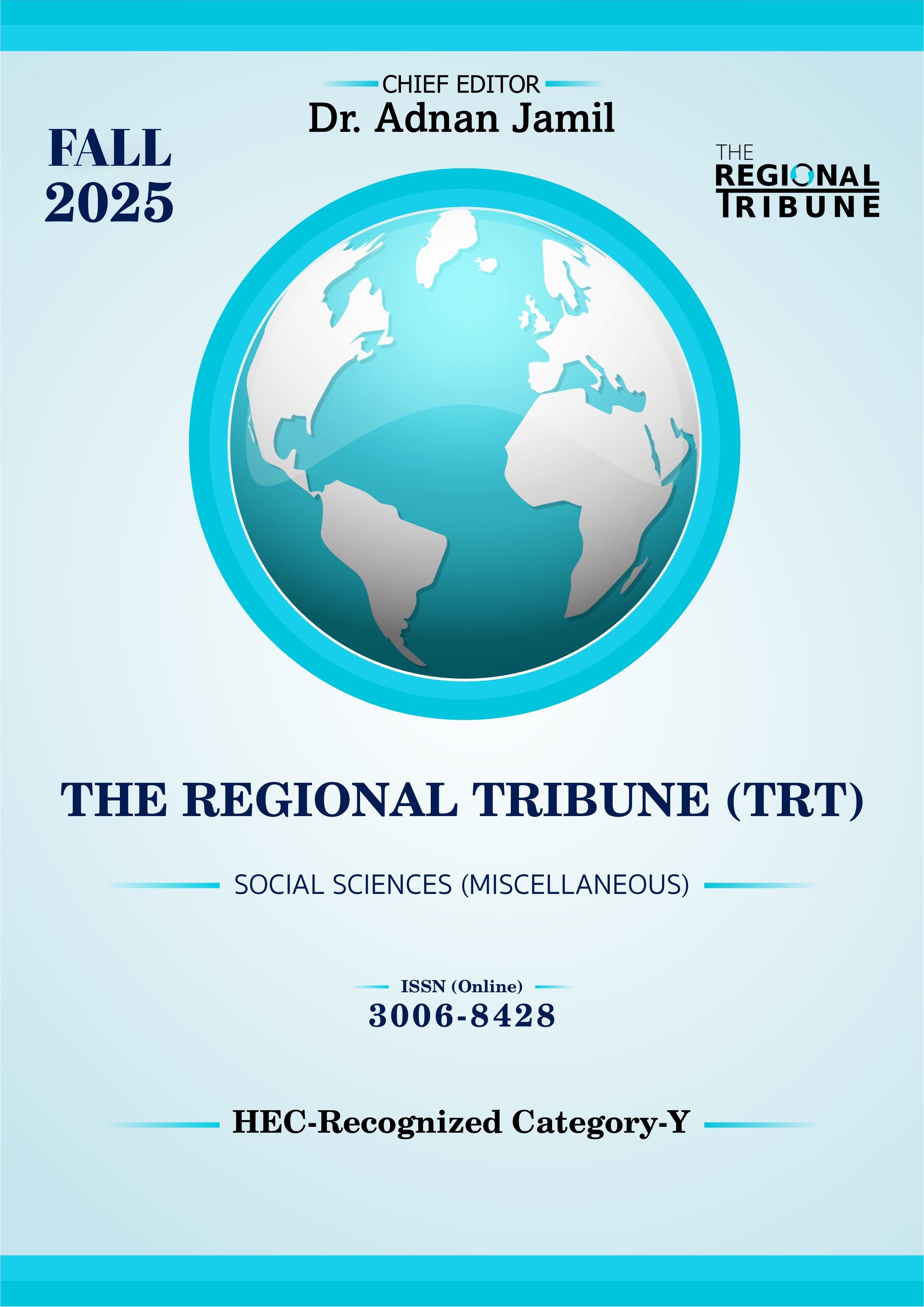Illness Perceptions as a Predictor of Depression Among Hypertension Patients: The Moderating Role of Sense of Coherence
DOI:
https://doi.org/10.55737/trt/FL25.150Keywords:
Illness Perception, Depression, Sense of CoherenceAbstract
Depression often manifests through prolonged feelings of sadness, hopelessness, and loss of interest in daily life. Among individuals with hypertension, perceptions about their illness can strongly influence emotional well-being and the development of depressive symptoms. The present study examined how illness perception relates to depression in hypertensive patients and explored whether a sense of coherence acts as a moderating factor in this relationship. Survey research design was used to collect the data. A purposive sample of 200 young adults (aged 23–30 years; M = 25.61, SD = 2.40), including both males and females, was selected. Data were gathered using three standardized tools: the Depression subscale of the DASS (Lovibond et al., 1995), Brief Illness Perception Questionnaire (Broadbent et al., 2006), and Antonovsky’s Sense of Coherence Scale (1978). Findings revealed significant relationship among study variables and also highlighted that sense of coherence moderated the relationship between illness perception and depression among hypertensive patients. The results highlight the importance of addressing psychosocial components within both medical and psychological interventions for hypertensive patients. Furthermore, it is recommended that healthcare training programs include education on the psychological management of chronic illnesses, while future research should explore these relationships through longitudinal approaches.
References
Antonovsky, A. M. (1978). The thinking cure: Some thoughts on thinking in psychoanalysis. Contemporary Psychoanalysis, 14(3), 388–404. https://doi.org/10.1080/00107530.1978.10745546
Antonovsky, A. (1987). Unraveling the mystery of health. How people manage stress and stay well. San Francisco: Jossey-Bass Publishers.
Broadbent, E., Petrie, K. J., Main, J., & Weinman, J. (2006). The brief illness perception questionnaire. Journal of psychosomatic research, 60(6), 631-637. https://doi.org/10.1016/j.jpsychores.2005.10.020
Chew, B. H., Vos, R. C., Heijmans, M., Shariff-Ghazali, S., Fernandez, A., & Rutten, G. E. H. M. (2015). Illness perception among hypertensive patients in primary care centre UKMMC. Malaysian Family Physician, 10(2), 74–81. https://pmc.ncbi.nlm.nih.gov/articles/PMC4400685/
Eriksson, M., & Lindström, B. (2006). Antonovsky’s sense of coherence scale and its relation to health: A systematic review. Journal of Epidemiology and Community Health, 60(5), 376–381. https://doi.org/10.1136/jech.2005.041616
Flensborg-Madsen, T., Ventegodt, S., & Merrick, J. (2006). Sense of coherence and physical health. Testing Antonovsky’s theory. TSW Holistic Health & Medicine, 1, 248-255. https://doi.org/10.1100/tswhhm.2006.232
Lovibond, S. H. (1995). Manual for the depression anxiety stress scales. Sydney psychology foundation.
Mahmood, S., Hassan, S. Z., Tabraze, M., Khan, M. O., Javed, I., Ahmed, A., Siddiqui, O. M., Narmeen, M., Ahmed, M. J., Tariq, A., Patel, M. S., & Fatima, K. (2017). Depression and anxiety among patients with hypertension: a cross-sectional study from Karachi, Pakistan. BMC Psychiatry, 17(1), 1–7. https://doi.org/10.1186/s12888-017-1483-1
McSharry, J., Moss‐Morris, R., & Kendrick, T. (2011). Illness perceptions and glycaemic control in diabetes: A systematic review with meta‐analysis. Diabetic Medicine, 28(11), 1300-1310. https://doi.org/10.1111/j.1464-5491.2011.03298.x
Ross, S., Walker, A., & MacLeod, M. J. (2004). Patient compliance in hypertension: role of illness perceptions and treatment beliefs. Journal of Human Hypertension, 18(9), 607–613. https://doi.org/10.1038/sj.jhh.1001721
Schäfer, S. K., Lass-Hennemann, J., Groesdonk, H., Volk, T., Bomberg, H., Staginnus, M., Brückner, A. H., Holz, E., & Michael, T. (2018). Mental health in anesthesiology and ICU staff: Sense of coherence matters. Frontiers in Psychiatry, 9,440. https://doi.org/10.3389/fpsyt.2018.00440
Downloads
Published
Issue
Section
License

This work is licensed under a Creative Commons Attribution-NonCommercial 4.0 International License.



